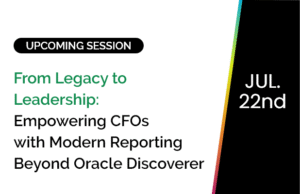What is Workforce Planning?
Workforce planning is a process in which organizations align their needs with the needs of its workforce. It is the process of having the right people who have the right skills at the right time in the organization.
According to Bersin by Deloitte, one of the world’s leading firms for HR research, 90% of companies conduct some level of workforce planning; only 15% take a strategic approach to addressing the talent demand, talent supply, and the steps required to close the gap between the two. According to Bersin, only 20% of the workforce planning produce useful results for business leaders while forecasting revenue and operating budgets.
Traditional workforce planning process involves the human resource team, while strategic workforce planning is a shared responsibility between business leaders across the organization. The key to effective strategic workforce planning comes from its ability to hone on critical talent, their needs, their historical data, and develop a targeted talent strategy.
The Strategic Workforce Planning Process
Workforce planning comes with a lot of challenges, making it essential to utilize useful tools and methods at your disposal. The most crucial function of any talent management team in HR is to build the organizational capability required to execute strategy, along with the ability to conduct Strategic Workforce Planning effectively.
5 Proven Steps for Strategic Workforce Planning:
Step 1 – Having Strategic Intent
The entire process begins with having a strategic plan. The talent management team, along with line executives, should review the business strategy at the Corporate and Functional level, capturing key business priorities and understanding the drivers of business success.
Step 2 – Determining Strategic Positions
The next step towards strategic workforce planning involves determining strategic areas. Identifying roles that have the potential to accelerate the achievement of the business strategy and competencies is vital to executing strategy and delivering results in line with business goals. Utilizing data-driven decision-making can enhance this process, ensuring more precise and effective workforce planning.
Step 3 – Identifying Strategic Players
Every organization has individual employees who occupy strategic positions, and they are vital players. They possess immense knowledge, attributes, and skill for that position, and their profile becomes a point of reference. It is crucial to assess each incumbent in a strategic area since the roles are only as important as the people who occupy them.
Step 4 – Implementing an action plan
The action plan step involves the coming together of different teams and departments in bringing your workforce plan to life. The measures include discussing allotted budget with accounting team and communicating and marketing new positions available to the respective parties. There is also a need to coordinate with your executive team, IT staff, and middle management for the smooth running of the process.
Step 5 – Report, Monitor, and Adjust
Once you have clearly defined what is required to deliver your strategic intent, it is imperative to develop reporting, monitoring, measuring frameworks to ensure the process is self-sustaining. Implementing a robust human capital management solutions can facilitate these reporting and monitoring processes, ensuring that workforce planning remains aligned with organizational objectives.
How Can Workforce Planning Help?
When used correctly, workforce planning can help businesses identify and rectify issues quickly. It is an integral part of any organizations recruitment strategy. It helps in identifying critical roles and aid in filling such positions. The company can recruit for these vital positions at the right time to ensure that the expansion goes according to schedule. Workforce planning aligns the business planning with hiring and employee retention planning.
- Other than hiring new talent, workforce planning helps in taking care of your aging workforce. It helps in identifying positions that will be hard to fill if an employee left.
- Workforce planning helps in taking specific steps in the workforce that can reduce turnover and retain top talent.
- Workforce planning also helps in avoiding delays and disruptions that can impact business profits.
- It helps businesses to cope with times of high and low demand for its products or services.
To Sum It Up!
To assess the current and future needs of an organization Workforce planning is crucial, both in terms of quality and quantity. It directly links human resources activities to organizational objectives.
Organizations sustain and develop high-quality workforce planning programs and break down the traditional barriers to effective workforce planning.
Organizations must invest in workforce planning technology that supports predictive supply analytics, employee- level action-planning, bottom-up demand planning, and summarization of gaps.
It provides organizations with a cushion by preparing it for external and internal factors that may affect its activities. Workforce planning determines the successful implementation and achievement of an organization’s objectives and goals.









